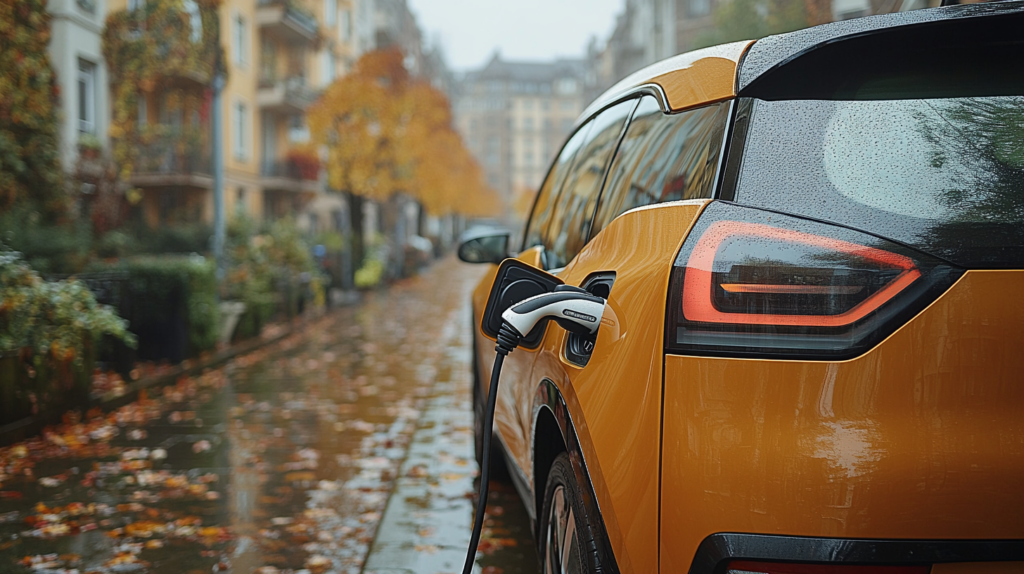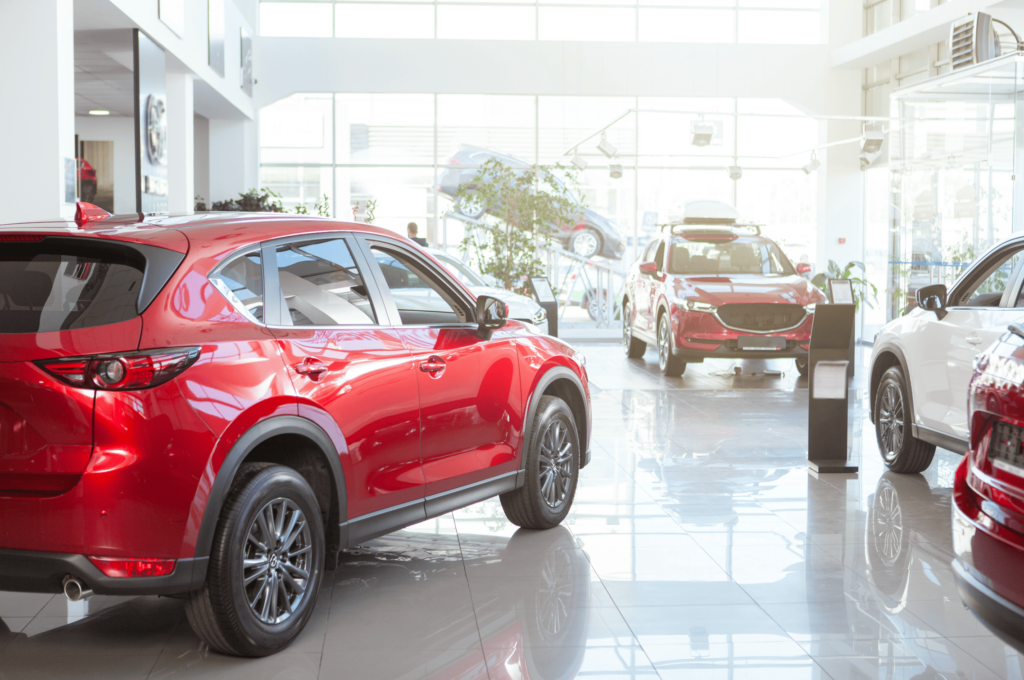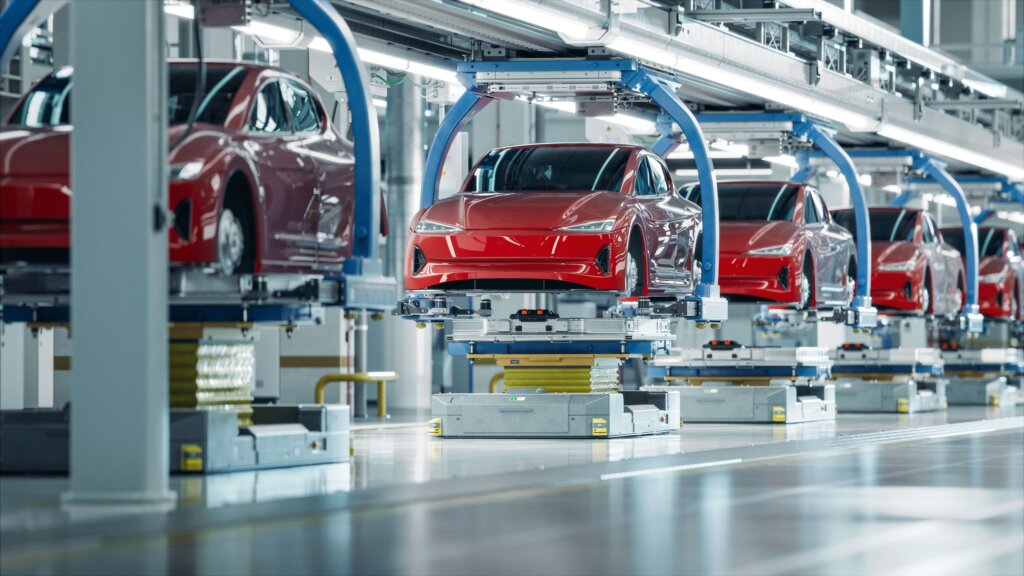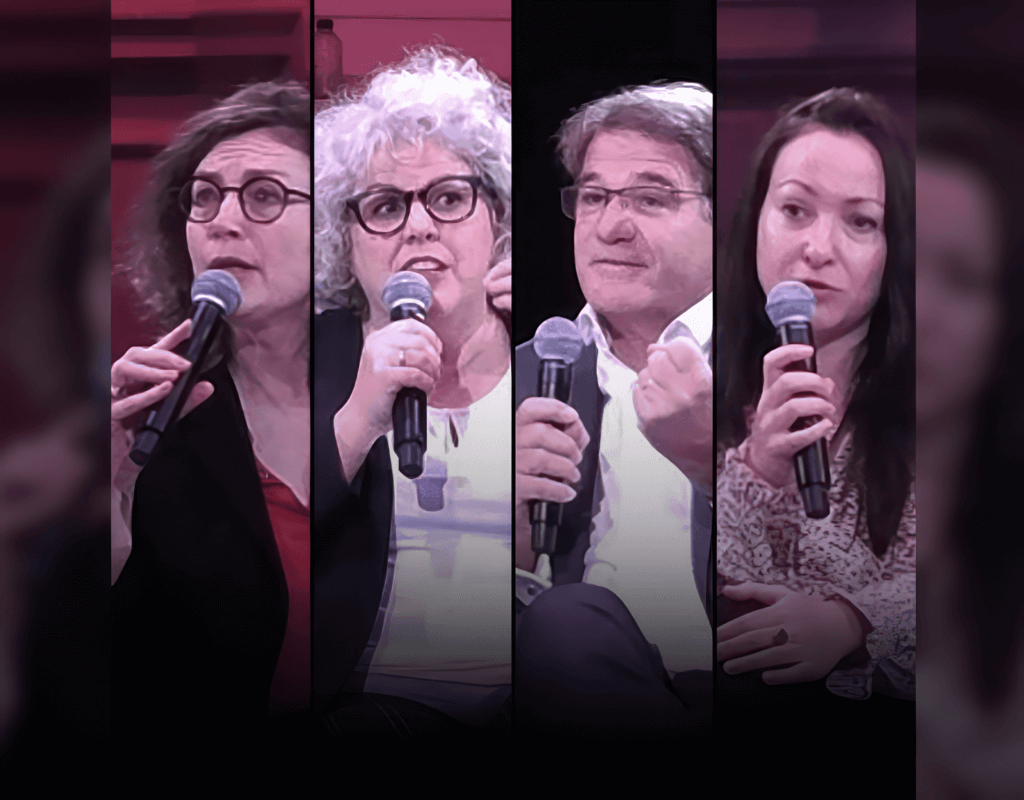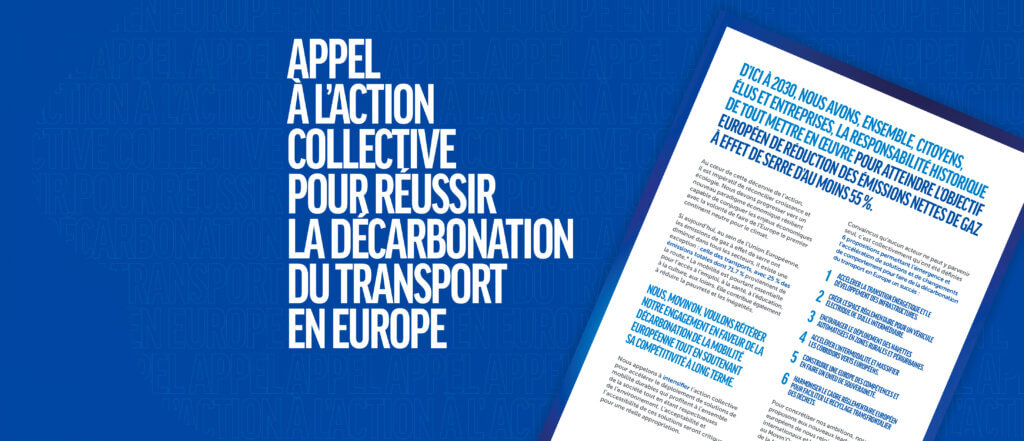Pilotless Flying Cars Traverse the Wild Blue Yonder
The world’s first licensed autonomous electric air taxi, China’s EHang Holdings’ EH216-S, flew across the Islamic holy city of Mecca, Saudi Arabia on June 12, 2024, just before the start of the annual Hajj pilgrimage. For its trial flight, this pilotless electric vertical takeoff and landing aircraft carried Hajj pilgrims, an advance for aerial mobility in Saudi Arabia and across the Middle East.
Globally, from Mecca to Minnesota to Guangzhou, electric flying cars are taking off.
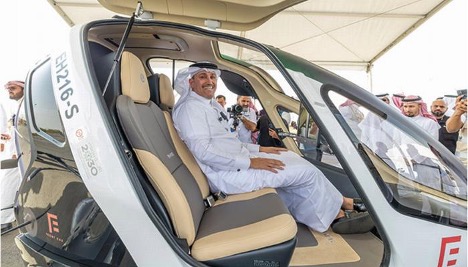
“This debut flight of the EH216-S pilotless eVTOL in Saudi Arabia marks a significant milestone in EHang’s ongoing internationalization and an important step forward in propelling global advanced UAV reform,” said Huazhi Hu, founder, CEO, and chairman of EHang.
Two prominent Saudi officials attended the EH216-S trial flight – Saleh Al-Jasser, Minister of Transport and Logistics Services, and Abdulaziz Al-Duailej, president of the country’s General Authority of Civil Aviation (GACA).
“The trial was done in order to make sure the air taxi could provide services during the Hajj season,” Al-Jasser told Al Arabiya, the Saudi state-owned international Arabic TV news channel, speaking from inside the air taxi.
“Pilotless and controlled from the ground, this aircraft fits in two people and can fly without fuel for a distance of up to 40 kilometers, powered only by electricity, in full compliance with all safety parameters,” the Transport Minister said.
GACA President Al-Duailej was enthusiastic, saying, “The trial marks a major advancement in integrating advanced air mobility solutions into Saudi Arabia’s aviation landscape,” Gulf Business reported.
EHang’s EH216-S flying car is the first eVTOL to receive a type certificate for unmanned aerial vehicle operations. It was certified in China in October 2023 and approved for series production in April 2024. The certification allows EHang to engage in passenger-carrying unmanned autonomous commercial operations.
But EHang still needs an air operator certificate from Chinese regulators, and to date there is no framework established for this as yet.
The EHang’s EH216-S trial in Mecca follows a similar demonstration in Abu Dhabi earlier this year that also showcased other eVTOL models for firefighting and aerial logistics. These trials are essential for establishing the regulatory framework to deploy pilotless eVTOL aircraft in low-risk airspaces, Saudi officials said.
The EH216-S is designed to transport two passengers with a maximum cargo capacity of 485 pounds (220 kilograms). Its compact size, 1.85 meters in height and 5.63 meters in width, and battery charging time of less than 10 minutes from 30 percent to 80 percent, make urban use possible.
The autonomous demonstration flight was conducted by EHang Holdings in collaboration with Saudi-based Front End, as part of Saudi Arabia’s broader initiative to integrate advanced air mobility (AAM) solutions into its transportation network.
This initiative aligns with the country’s Vision 2030 national program and its goal of building a “Connected Kingdom” and developing Saudi Arabia as a hub for innovative transportation solutions.
Saudi Arabia has invested hundreds of millions of dollars into advanced air mobility solutions under the Saudi Aviation Strategy, which aims to transform the Kingdom into the Middle East’s leading aviation hub by 2030.
The strategy is unlocking more than US$100 billion worth of investment, with passenger numbers growing fast, government officials said.
Saudi Arabia is exploring the potential of air taxis to transport medical equipment and facilitate emergency travel, move pilgrims between sacred locations, and support logistical operations.
Saudia, the Kingdom’s flag carrier, has unveiled plans to launch its own air taxis by 2026 to help ferry Hajj pilgrims between the King Abdulaziz International Airport in Jeddah and hotels in Mecca close to the Grand Mosque. It plans to purchase approximately 100 aircraft to accomplish this goal.
China Seeks to Dominate the Flying Car Space
EHang is also expanding its reach into the lucrative tourism sector. The company recently signed a deal to sell 50 of its eVTOL flying cars to Xishan Tourism, based in Kunming, the capital of Yunnan Province in southwestern China. It has plans to sell 450 more flying cars over the next two years for aerial tourism and passenger transportation.
EHang is working with regulators on standardization for this energetic sector, as quickly as possible – quickly because EHang has competitors in China, in fact, right in the company’s hometown, Guangzhou.
The hub of Chinese eVTOL innovation appears to be Guangzhou, the sprawling port city of 15 million northwest of Hong Kong on the Pearl River.
Guangzhou is home to three companies that manufacture flying cars: EHang, the Hebei Jianxin Flying Car Technology Company, and Xpeng AeroHT, a subsidiary of the electric vehicle maker Xpeng.
Xpeng AeroHT, the largest flying car company in Asia, makes both an eVTOL flying car and a new modular flying car.
Xpeng AeroHT came to CES 2024 in Las Vegas in January to announce that its Land Aircraft Carrier modular flying car will open to pre-order in 2024 Q4, with delivery to individual users starting in 2025 Q4.
At CES, Xpeng AeroHT demonstrated this unique vehicle, which is designed in two-parts so that it switches between terrestrial and aerial modes. The ground module carries the air module. The air module and ground module automatically separate and combine, and the ground module can recharge the air module.
Photo below: Xpeng AeroHT‘s Land Aircraft Carrier modular flying car. The air module facilitates vertical takeoff for low-altitude flights, while the ground module envelops the air module, allowing for ground transportation. (Photo courtesy Xpeng AeroHT)
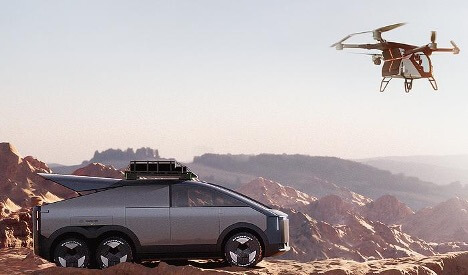
“In 2013, we started AEROHT, dreaming of flying cars,” said Tan Wang, co-founder, Xpeng AeroHT in Las Vegas. “Fast forward to 2024, and that dream has become a reality. Today, we’re thrilled to unveil our two latest innovations which will take everyday folks from driving on roads to soaring through the sky. The future is here today, and the whole world is ready to fly!”
Generally, prices for these eVTOL aircraft start at around one million yuan (US$138,000) a price point that wealthy individuals or successful businesses can reach, far less expensive than traditional private jets.
The Hebei Jianxin Flying Car Technology Company, also headquartered in Gangzhou, has bought the exclusive rights to manufacture and use AirCar aircraft inside an undisclosed area, multiple media outlets reported in March.
The AirCar, the Slovakia-based KleinVision’s flying car, will be manufactured and used in China after the company signed a deal with China’s Hebei Jianxin Flying Car Technology for an undisclosed amount.
AirCar was issued with a certificate of airworthiness by the Slovak Transport Authority in 2022, but unlike the electric vertical takeoff and landing, eVTOL, passenger aircraft, the AirCar does not take off and land vertically, and it does require a runway.
The city of Guangzhou is offering its strong support for the fledgling industry. In June 2024, Guangzhou announced its intention to invest more than 10 billion yuan (US$1.4 billion) by 2027 in “low-altitude economy” services that operate in airspace closer to the ground than commercial aircraft do.
The low-altitude sector includes both piloted and autonomous civilian aircraft that fly at altitudes up to 3,000 meters (9,842 feet), but not up to 10,000 meters (32,808 feet) where commercial jetliners fly.
Guangzhou plans to build infrastructure for flying vehicles, including more than 100 takeoff and landing points. A general aviation aerodrome with a runway shorter than those at civil airports is also planned.
The market scale of China’s low-altitude economy exceeded 500 billion yuan (US$137.7 billion) in 2023, up 33.8 percent year on year, according to an April report by CCID Consulting, China’s largest research and consulting firm, which operates under China’s Ministry of Industry and Information Technology. The figure is expected to top one trillion yuan in 2026, the report predicts.
Flying Cars Become 'Roadable Aircraft' in the USA
In the United States, startups that make flying cars number in the dozens, but their moves to commercialize are limited because only two of the 50 U.S. states have made “roadable aircraft” legal – Minnesota and New Hampshire.
The Samson Sky Switchblade Flying Sports Car design group and the handful of other flying car designers got a big boost on May 15, 2024 when Minnesota Governor Tim Walz signed into law a bipartisan transportation bill that contains a provision for roadable aircraft, described as an airplane that can be driven to and from an airport or private landing strip.
The Switchblade, billed by Samson Sky as the world’s first flying sports car, seats two, side-by-side, with room to store travel bags, and flies up to 500 miles on a single tank of gas.
The Switchblade, which had its maiden flight in November 2023, has a unique hybrid electric system that uses unleaded petrol rather than leaded aviation fuel. Owners can fuel up at any gas station, making for a practical flying car suited to everyday use.
Switchblade designer and CEO Russell Bousfield provided industry input to Minnesota’s Senate Transportation and Public Safety Committee. “I’m happy that there was such a great show of support from the state legislature,” he said. “It was also great to see independent interest for using roadable aircraft for business and travel in Minnesota.”
“IMAGINE, YOU SIMPLY PULL OUT FROM YOUR GARAGE, DRIVE YOUR STREET-LEGAL SWITCHBLADE TO A NEARBY MUNICIPAL AIRPORT. ONCE THERE, YOU TRANSFORM THE VEHICLE FROM DRIVING TO FLYING MODE, AND FLY TO THE AIRPORT CLOSEST TO YOUR DESTINATION, WHERE YOU LAND, TRANSFORM BACK TO DRIVING MODE AND DRIVE THE LAST FEW MILES TO YOUR FINAL DESTINATION.” – Russell Bousfield, Samson Sky CEO and Switchblade designer
Minnesota’s law, which takes effect August 1, does not allow roadable aircraft to take off from public roadways; they must use official airstrips, but even so, Bousfield said Samson Sky will continue to propose and support similar legislation across the United States. Legislation like that in Minnesota and New Hampshire will help advance adoption of vehicles like the Switchblade, said Bousfield, “This type of legislation gives more credibility to the vehicles.”
Toute l’actualité de Movin’On
dans votre boîte mail
Auteur
Partager
Tweets de @movinonconnect
Movin'On 2035 TODAY EP02 - Circular Economy & Competitivity
Movin’On 2035 TODAY EP01 – Fair Mobility for All https://x.com/i/broadcasts/1yNxagBrWZbGj
✨ THAT'S A WRAP!
Movin'On Summit 2024 has just concluded in Brussels!
More than 350 leaders and experts in sustainable mobility gathered to exchange ideas, collaborate, and share their vision for desirable and decarbonised mobility in Europe. Together, we explored ways to build…
🔴 Live from #MovinOnSummit2024
@AshaSumputh has just invited Denis Machuel, CEO at @AdeccoGroup and Florent Menegaux, President of the @Michelin Group & President of Movin'On
L’actualité de la mobilité durable
Découvrez les dernières tendances, des analyses thématiques et nos prochains rendez-vous

